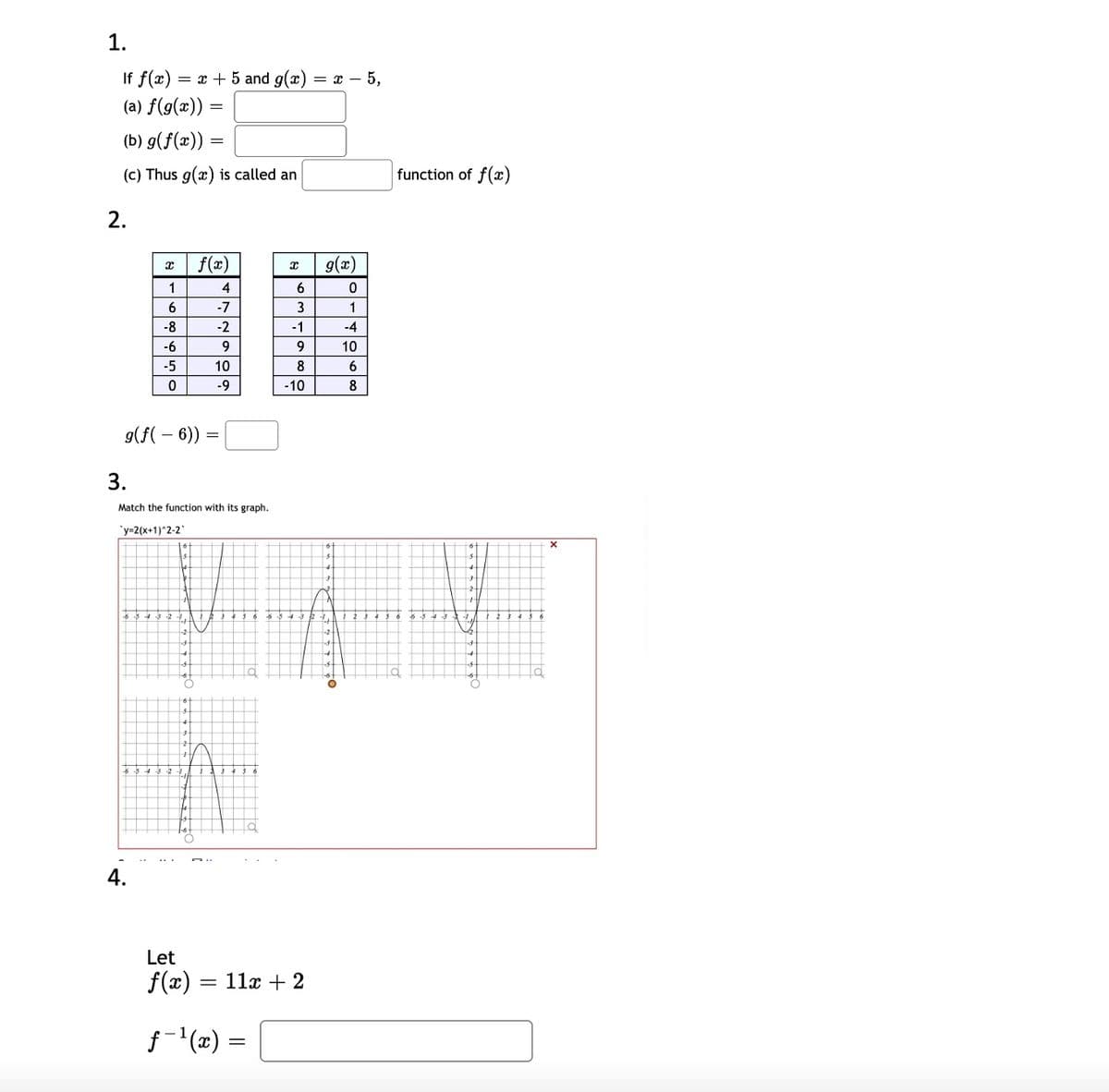Algebra & Trigonometry with Analytic Geometry
13th Edition
ISBN:9781133382119
Author:Swokowski
Publisher:Swokowski
Chapter5: Inverse, Exponential, And Logarithmic Functions
Section5.3: The Natural Exponential Function
Problem 54E
Related questions
Question
Plkease help

Transcribed Image Text:1.
If f(x) = x + 5 and g(x)
= x – 5,
(a) f(g(x)) :
(b) g(f(x)) =
(c) Thus g(x) is called an
function of f(x)
2.
f(x)
g(x)
1
4
6.
-7
1
-8
-2
-1
-4
-6
9.
9
10
-5
10
8
-9
-10
8
9(f( – 6))
3.
Match the function with its graph.
'y-2(x+1)*2-2
-1,
4.
Let
f(x) = 11x + 2
f- (x) =
Expert Solution
This question has been solved!
Explore an expertly crafted, step-by-step solution for a thorough understanding of key concepts.
Step by step
Solved in 2 steps

Recommended textbooks for you

Algebra & Trigonometry with Analytic Geometry
Algebra
ISBN:
9781133382119
Author:
Swokowski
Publisher:
Cengage


Algebra & Trigonometry with Analytic Geometry
Algebra
ISBN:
9781133382119
Author:
Swokowski
Publisher:
Cengage
